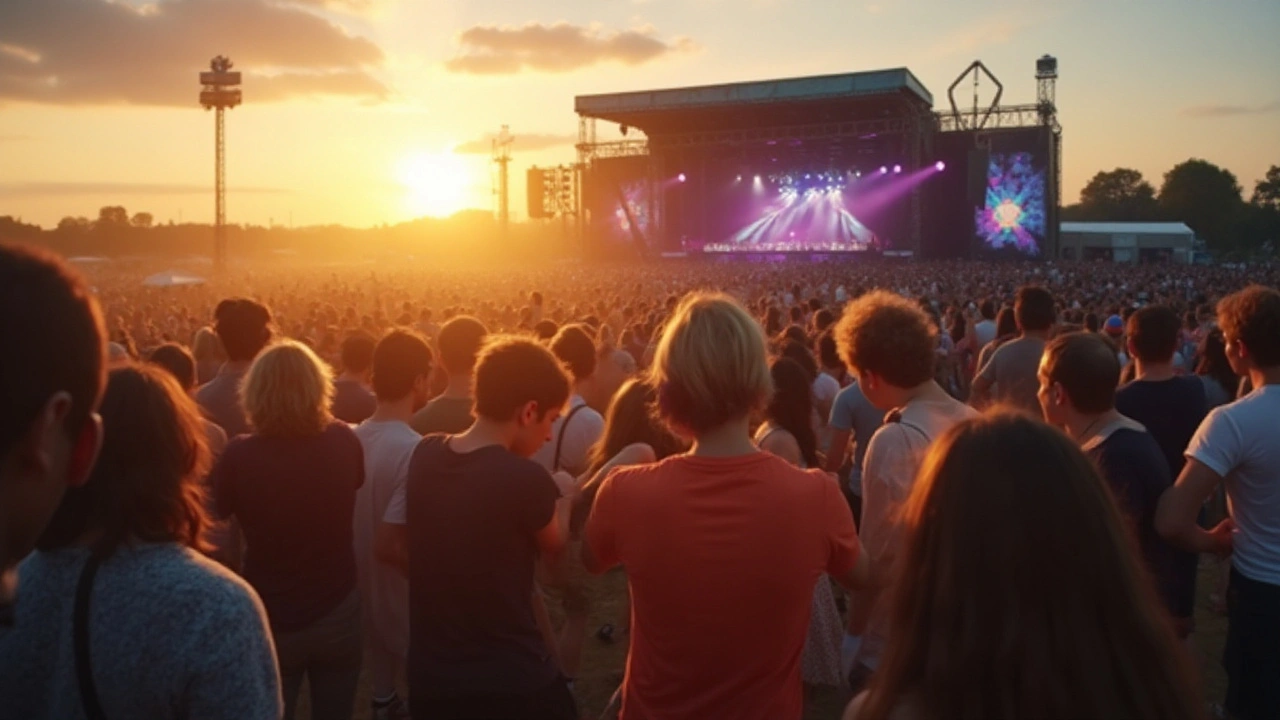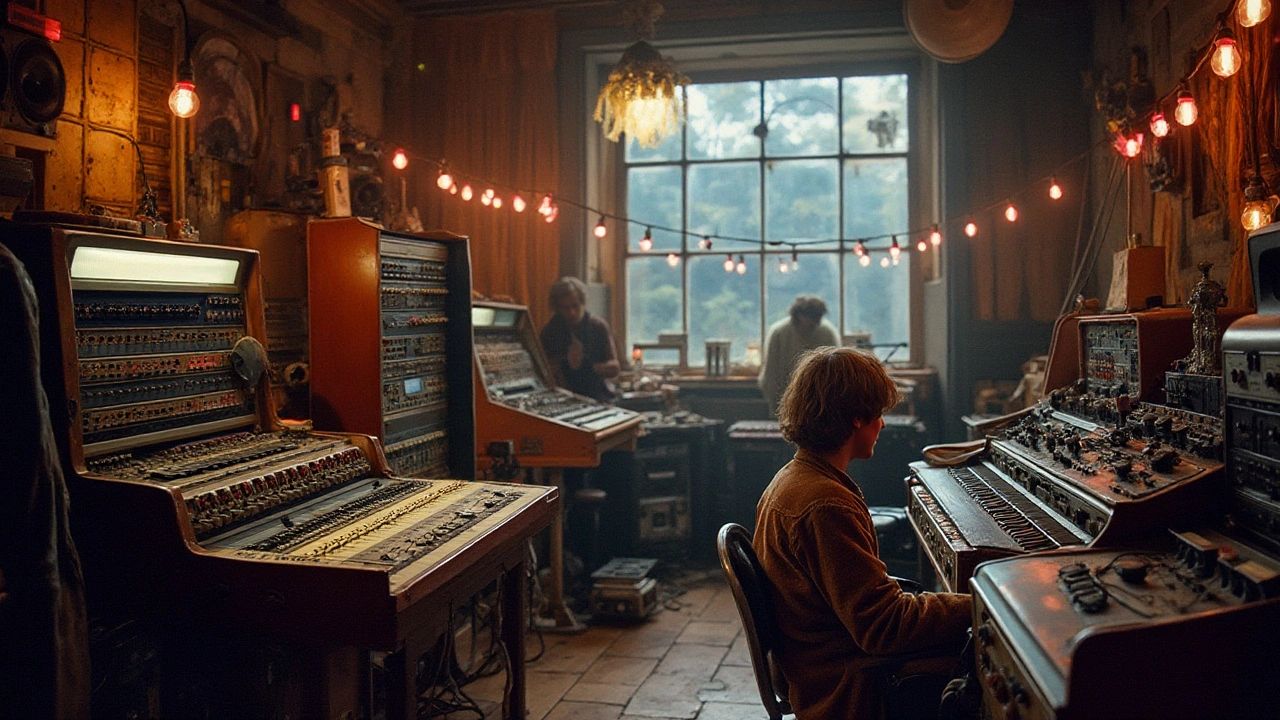Electronic music is a testament to the boundless creativity and innovation that humans are capable of pushing boundaries, both musically and technologically. From its early days of pianos that played through electricity to today's multi-layered synth landscapes, this genre has come a long way. It's fascinating to imagine a time where sounds we now find familiar were once revolutionary and experimental.
In tracing the history of electronic music, we unveil a narrative of individuals who dared to dream differently. These artists and engineers sought out new ways to create and shape sound, forever changing what was possible in music. The genre not only embraces technological advancements but thrives on them, transforming culture in the process. Dive into this rich tapestry of sound, where each note offers a glimpse into human ingenuity.
- Origins of Electronic Sound
- Pioneers and Innovators
- Technological Advancements
- Emergence of New Genres
- Modern-Day Impact
Origins of Electronic Sound
Long before electronic dance hits became the heartbeats of nightclubs, electronic music emerged from the curious experiments of early 20th-century composers who were driven by the desire to explore new realms of sound. As the Industrial Revolution ushered in a world of novel gadgets and electrified machinery, music found itself ushered onto a similar path of discovery. In the 1920s, the advent of instruments like the Theremin, invented by Léon Theremin, offered an unearthly soundscape that took audiences by storm. Unlike anything heard before, this eerie, hands-free instrument enchanted listeners by creating a seamless glissando with mere hand gestures.
With each decade, electronic music seemed to shed its experimental confines, stepping into the limelight through recording technologies that became more sophisticated and accessible. The 1930s saw electronic sound take a pivotal role in film soundtracks, as elements of this fresh genre underscored moods and heightened emotions in cinema. Such integrations showcased the practical utility of electronic music beyond concert halls and into popular culture. As WWII concluded, composers and musicians were eager to break traditional barriers, experimenting with electronic circuits to produce soundscapes impossible via acoustic instruments alone.
"The public characterizes electronic music as harsh, but those willing to listen with open ears find it replete with unexpected beauty," said Karlheinz Stockhausen, famously known for his avant-garde compositions and experimentation with electronic sound.
Jumping forward to the 1950s, electronic music found a new home in the world of universities and radio stations, most prominently within the BBC Radiophonic Workshop in the UK. Here, pioneers like Delia Derbyshire conjured electronic compositions that played with frequency and tone to craft mesmerizing auditory experiences. Their work was revolutionary, as synthesis and tape manipulation birthed sounds that helped define a narrative freedom within music that had rarely existed before. As technology furthered its grasp on the world, innovators realized that electronics could democratize sound, offering opportunities to musicians who never wielded conventional instruments.
Enthusiasts and purveyors of electronic music, particularly those bereft of traditional training, found the new wave of sound both liberating and challenging. Synthesizers, like those developed by Robert Moog, revolutionized the field with their ability to generate a multitude of timbres and pitches, heralding the beginning of modern synthesis in the late 1960s. At this juncture, electronic music continued morphing into something vibrant and uncontainable, paving the way for the myriad genres and unique styles we recognize today. Whether through manipulation of existing sounds or pioneering novel auditory constructions, electronic music's origins exemplify human creativity's limitless potential.Dark rooms filled with blinking lights and tangled cables became labs for would-be sound scientists, creating unpredictable yet resonant music that would endure for decades.
Pioneers and Innovators
The journey of electronic music wouldn't be where it is today without the trailblazers who dared to dream differently. In its infancy, electronic sound was a canvas for innovation, and it attracted curious minds eager to experiment. One of the earliest pioneers was the influential Thereminist, Léon Theremin, who in 1928 introduced the Theremin, an eerie-sounding instrument that could be played without physical contact. This invention wasn't just a novelty; it was a gateway into a new world of music-making that would inspire countless future artists.
Following the Theremin, the mid-20th century witnessed a surge of innovation from thinkers like Robert Moog. In the 1960s, Moog developed the Moog Synthesizer, a seismic shift that reshaped music production. It provided artists with an unprecedented ability to shape soundwaves and perform music in ways that were not possible before. Wendy Carlos, renowned composer and electronic musician, brought this instrument to the forefront with her 1968 album "Switched-On Bach," which not only showcased the capabilities of the synthesizer but also legitimized electronic music in classical circles.
In the same vein, German band Kraftwerk emerged in the 1970s as trailblazers, blending experimental sounds with accessible and rhythmic music. Their work synthesized sound experiments and pop sensibilities, laying the groundwork for numerous electronic music genres. Their minimalist approach and use of robotic themes were groundbreaking. As Kraftwerk member Ralf Hütter once said,
"We use the technology, but the technology must not use us."This philosophy resonated with a generation of artists who saw electronic sound as a tool of expression rather than just a machine.
Jean-Michel Jarre, a French composer known for his spectacular concerts, joined the electronic revolution with albums like "Oxygène" that captivated audiences with their lush soundscapes. In parallel, Japanese electronic music innovators like Isao Tomita explored how synthesizers could be used to reinterpret classical compositions, influencing a diverse global audience.
The 1980s brought the explosion of personal computing, enabling artists like Aphex Twin and Brian Eno to delve further into the experimental confluence of music and technology. These musicians, often labeled as ambient pioneers, explored sound innovation with a focus on atmosphere and emotion. They demonstrated that electronic music could evoke feelings as varied as any orchestral piece, proving its legitimacy as a major force in the music industry. The widespread impact of these pioneers and innovators laid a strong foundation that continues to inspire modern artists and producers around the world.

Technological Advancements
To understand the incredible evolution of electronic music, one must dive into the pool of technological advancements that have made this genre what it is today. Early experiments with electricity in sound can be traced back to the early 20th century, culminating in the groundbreaking invention of the theremin in the 1920s by Léon Theremin. This instrument, controlled without physical contact, marked the beginning of a sound revolution. Performers could now create eerie, pitch-perfect notes using just the motion of their hands, offering a unique juxtaposition between man and machine. This technological leap laid the groundwork for what electronic music would later become, liberating sound from traditional acoustic constraints.
The next significant leap came in the 1950s, when technology met creativity at the intersection of engineering and art in the form of the synthesizer. The rise of synthesizers like the Moog and the ARP in the 1960s allowed musicians to explore uncharted soundscapes. These machines, with their oscillators and frequency modulators, enabled artists like Wendy Carlos and Keith Emerson to pioneer new sound waves, generating tones unheard of before their time. With an array of switches and knobs, these synthesizers were essentially a canvas for sound designers to paint on, transforming the music production landscape forever.
As we wade through the history of the music evolution, the digital era introduced MIDI (Musical Instrument Digital Interface) technology in the 1980s, a game-changer for electronic music production. MIDI allowed different electronic instruments to communicate seamlessly, broadening the scope of musical possibilities by allowing a single musician to control multiple devices at once. This technology was integral to the development of complex, layered compositions that have come to define modern electronic music. Suddenly, composers could easily integrate and manipulate diverse sounds, bridging the gap between analog and digital.
As Brian Eno wisely put it, "The great benefit of MIDI is that it can be downloaded electronically, and therefore nobody needs to know what you've done exactly, unless they want to."
The rise of Digital Audio Workstations (DAWs) like Ableton Live and Logic Pro in the late 1990s and early 2000s further democratized music creation. No longer needing expensive studio time, aspiring artists could craft intricate tracks from the comfort of their own homes. This accessibility ultimately fueled the diversification and growth of electronic music genres such as techno, house, trance, and drum and bass. The possibilities were now limitless, with creativity taking the driver's seat unbounded by previous financial or technological constraints.
Finally, a brief glance at the present day reveals a musical world shaped by Artificial Intelligence and machine learning, tools which are beginning to influence even the core creative process. AI-generated compositions provide theoretical backing and inspiration for musicians curious to explore new auditory realms. As technology advances, it continuously shatters the boundaries we believed to be firm, propelling sound innovation into uncharted territories. Electronic music's journey shows no signs of merely following trends but rather setting the stage for what music can and may become.
Emergence of New Genres
The world of electronic music has a knack for birthing new genres, each more unique and intricate than the last. Look back to the late 20th century, when the traditional boundaries of music were itching to be crossed, paving the way for a revolution. Amidst the rhythmic flow of synth and bass, new pathways were forged across clubs and airwaves. Such a time saw the rise of house music, which held its roots in the early 1980s Chicago scene, blending disco's soul with raw electronic beats. This was not just music; it was a social movement, a cultural shift drawing diverse crowds to a shared dance floor.
As the 1990s rolled in, a kaleidoscope of subgenres started sprinkling the music landscape. Techno was thumping its presence from Detroit, characterized by its pulsating bass lines and pioneering use of sequencers. Artists like Juan Atkins, often dubbed the 'originator', laid the groundwork with tracks that seemed to echo the future. The UK wasn't far behind, bringing forth drum and bass, a genre that played with tempo and rhythm like never before. Jungle beats collided with orchestral strings, creating a soundscape that was both invigorating and fresh. A new soundtrack was being written for dance floors and gatherings, one that was purely rooted in experimentation.
The emergence of genres couldn't have thrived without technological advances. As synthesizers became more affordable and software like Ableton and FL Studio democratized music production, a wave of 'bedroom producers' began to ascend. This democratization meant that electronic music was no longer confined to expensive studios or seasoned musicians. Instead, it opened doors for young producers, eager to innovate and push musical boundaries. Trance bloomed from this soil, offering a blend of euphoria and melody that captured minds across Europe and later the world.
"Electronic music is the source of a new cultural expression, an urban reiteration of traditional consciousness,” suggested the visionary German composer Karlheinz Stockhausen.
Even today, the story evolves. Genres like dubstep, which emerged in the early 2000s, have their roots deeply intertwined in London's underground scene. What started as a niche sound with complex sub-bass frequencies and syncopated patterns soon exploded into mainstream venues and festivals, influencing pop music along the way. The beauty of electronic music lies not only in its sound but in its ability to endlessly reinvent itself, absorbing and reshaping the cultural zeitgeist. With every passing year, new pioneers join the ranks, embracing their own inspirations and continuing this legacy of innovation.

Modern-Day Impact
The impact of electronic music on today's musical landscape is nothing short of extraordinary. It's a genre that has permeated virtually every nook and cranny of the industry, subtly influencing not only pop and rock but also hip hop and even classical music. As technology advances, musicians have capitalized on new tools, offsetting traditional instruments with synthesizers, drum machines, and computer software, turning imagination into sound at lightning speed.
In the modern era, electronic music has become deeply intertwined with the culture of festivals like Tomorrowland and Electric Daisy Carnival. These events have become pilgrimage sites for music lovers, showcasing not just the music itself, but the dazzling visuals and the shared community experience. The global dance scene has risen to unparalleled popularity, bringing with it diversity and a sense of belonging, the likes of which the music world had never seen before.
The genre's versatility is a key factor in its enduring appeal. With roots that span across continents, electronic music constantly reinvents itself, blending traditional elements with novel ideas. One fascinating aspect is its role in the bedroom producer phenomenon. Nowadays, aspiring artists can create complete tracks from the comfort of their own homes thanks to downloadable software and online tutorials. This democratization of music production has seen a surge in unique voices eager to leave their mark in the industry.
"Electronic music is the folk music of the Stoned Age. In the age of communication, everyone can create, disseminate, and get their story told." - Moby
Streaming has played a pivotal role in expanding the reach of electronic sounds, allowing listeners access to a treasure trove of sub-genres at the touch of a button. Major platforms like Spotify and Apple Music regularly feature curated playlists that spotlight both up-and-coming musicians and established DJs. This visibility nurtures a deep connection between artists and their audiences, carving out spaces for niche sounds to flourish in the vast expanse of the internet.
Electronic music has also found a home in non-traditional spaces, elevating the modern storytelling experience. From movie scores to video games, its atmospheric and emotional capabilities enhance narrative depth and engagement. Noteworthy examples include Hans Zimmer's electronic-orchestral blend in the film ‘Inception’ and the stunningly immersive soundtrack of the game ‘Cyberpunk 2077’. These projects demonstrate not just an artistry but also a universal language that transcends boundaries, touching emotions and sparking inspiration in a way few things can.

